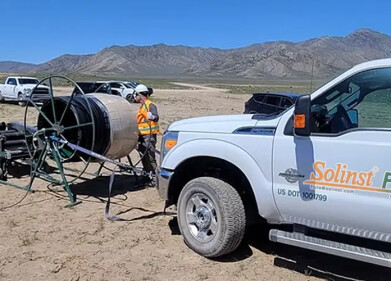Business News
How Will COP26 Affect the Environment?
Nov 02 2021
Over the course of the next ten days, heads of state, policymakers and delegates from all over the globe will gather in Glasgow for COP26. Chief among their priorities will be reaffirming commitments to reduce emissions and limit global warming to a maximum ceiling of 2°C – and a preferable threshold of 1.5°C – compared to pre-Industrial Revolution data.
Given that action is required over pledges and promises, COP26 represents a golden opportunity for the world to address the biggest challenge it has faced in modern times. So what tangible benefits for the environment can we expect to come out of the convention? While much depends on the words and deeds of the biggest polluting nations on the planet, here are a handful of potentially positive outcomes.
Coal on its way out
As the most damaging form of energy generation and one which has recently been linked to extreme rainfall events, coal has been in the crosshairs of environmentalists for many years now. Several nations have already removed the fuel from their energy mix altogether, while others have announced plans to do so in the near future. There was a minor victory on the subject just weeks before COP26 kicked off, with China stating that it would no longer finance coal projects outside of its own borders. Convincing President Xi Jinping to tighten regulations surrounding domestic coal projects – and getting other heel-draggers like Australia and India to follow suit – would represent a huge win for the environment post-COP26.
More ambitious targets
According to the latest statistics, the current emissions reductions proposed by countries around the world fall far short of what is necessary to avoid a 1.5°C increase in global temperatures. Indeed, it’s estimated that a further 20 to 28 billion of carbon emissions will need to be addressed every year in order to keep the goal within reach. Disappointingly, some countries have actually increased their targeted thresholds rather than reducing them, with places like Brazil stating that current emissions are actually much higher than previous estimates, so the objectives must be reassessed. COP26 provides an opportunity to take those powers to task.
New technology
As well as transitioning to cleaner sources of energy generation, another strategy for limiting carbon emissions is to introduce technology aimed at capturing them before they enter the atmosphere. Carbon capture and storage (CSS) is still in the development stage and faces a number of obstacles (such as gas purity analysis) before it can be implemented at scale. However, the upcoming convention provides the perfect stage for market-leading companies to display their latest technologies and attract funding from governments and investors interested in creating a cleaner tomorrow.
Renewables in the developing world
One of the ironies of the current climate crisis is that those nations who have contributed little to the problem are the ones set to be impacted by it most heavily. As a result, the 2019 Paris summit saw a handful of wealthy nations agree to contribute at least $100 billion towards aiding green energy projects in the developing world by 2030. While that target has been sadly missed, if COP26 is successful in making it achievable going forwards, poorer nations could have the opportunity to skip fossil fuel infrastructure and jump straight to more sustainable forms of energy, such as solar, wind and wave.
Digital Edition
AET 28.4 Oct/Nov 2024
November 2024
Gas Detection - Go from lagging to leading: why investment in gas detection makes sense Air Monitoring - Swirl and vortex meters will aid green hydrogen production - Beyond the Stack: Emi...
View all digital editions
Events
Jan 12 2025 Abu Dhabi, UAE
Jan 14 2025 Abu Dhabi, UAE
Jan 20 2025 San Diego, CA, USA
Carrefour des Gestions Locales de L'eau
Jan 22 2025 Rennes, France
Safety, Health & Wellbeing LIVE
Jan 22 2025 Manchester, UK



















